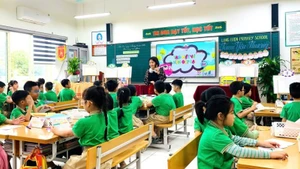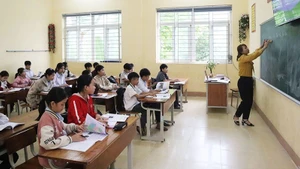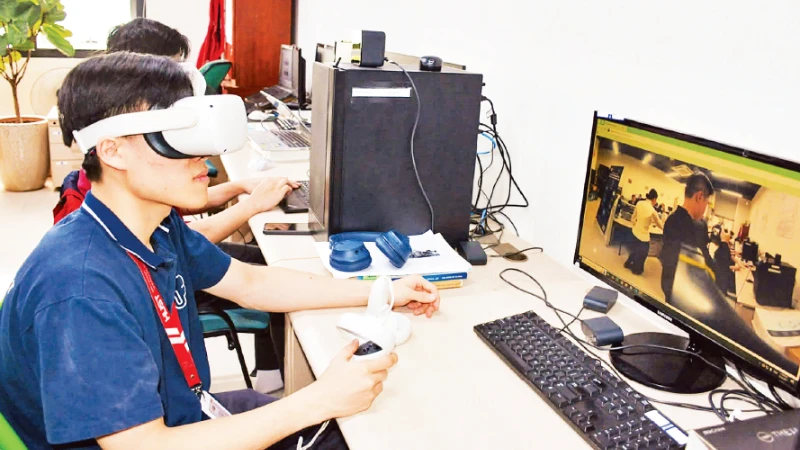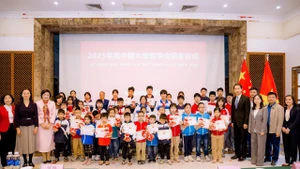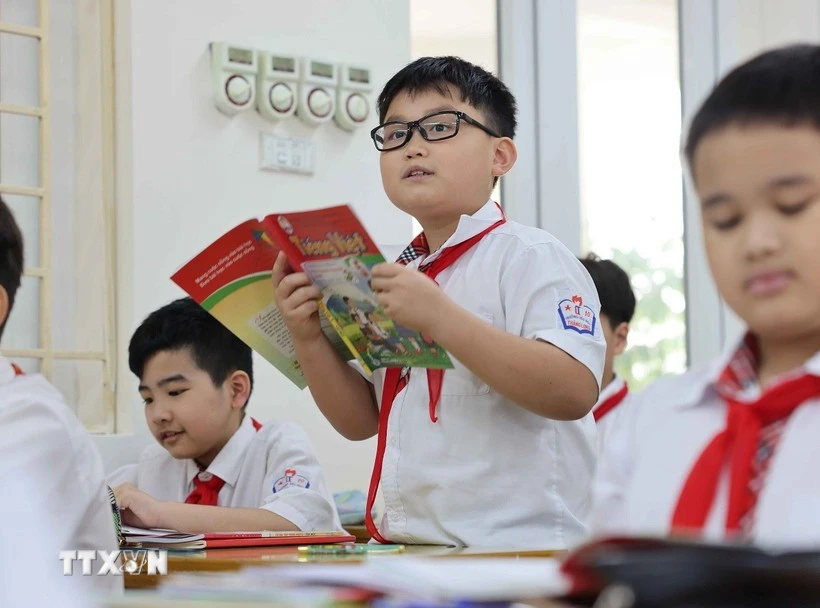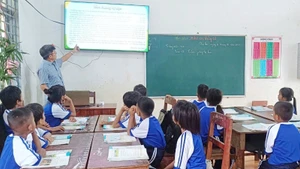The draft project states that English will be taught in schools where the official language is Vietnamese, and English will be widely used. English will not only be taught as a subject but also used to teach other appropriate subjects and specialisations and to communicate daily at school.
The draft outlines six levels for schools to implement English as a second language, with the overall goal of the language being widely and regularly used in communication, study, research, and work, gradually becoming the second language in schools.
For preschool education, the draft project targets that by 2030, 50% of eligible preschools will implement English as a second language for children.
By 2035, this program will be expanded to cover 100% of kindergarten children aged from three to five.
The goal is to implement the programme for all pre-school children in nursery and kindergarten by 2045.
For general education, by 2035, 100% of students will study English from grade one to grade 12 under levels one, two, and three of the programme. And by 2045, the target is for 100% of schools to implement the English as a second language programme at levels four, five, and six.
At the university level, the goal is for 100% of universities to apply English as a second language at levels four, five, and six.
For vocational education, the aim is for all vocational education institutions to implement programme according to career-oriented education.
Additionally, 50% of vocational institutions will conduct some other subjects or part of subjects in English.
According to Dr. Do Tuan Minh, Chairman of the Council of the University of Languages and International Studies (ULIS) under the Viet Nam National University - Ha Noi, soon after the Politburo’s Resolution 91-KL/TW on fundamental and comprehensive education reform was issued, ULIS promptly incorporated the goal of “making English the second language in schools” into its resolutions and decisions.
The university has also developed instructional documents clearly defining the roles and responsibilities not only of teachers and students but also of related stakeholders; and guiding how to integrate English at each level suitably for specific subjects.
Chau Son Primary School in Ba Vi District, Ha Noi, is one of schools currently implementing the national foreign language teaching and learning project for 2017-2025.
Le Thi Thanh Huyen, a teacher at Chau Son School, highly appreciates the positive outcomes brought by the project. The application of new, modern learning models and methods has not only increased students’ interest but also stimulated innovation spirit among teachers.
As a result, the English environment in the school has become friendlier and more effective.
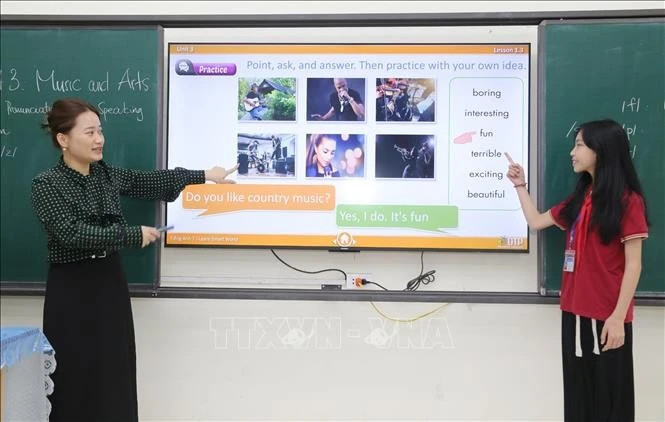 |
| At an English classroom in Lang Son province. (Photo: VNA) |
Notably, Chau Son Primary School was selected as one of three pilot schools to build an English as a Second Language (ESL) model in Ba Vi District for the 2024-2025 school year. The model’s implementation is jointly carried out by the Ba Vi District’s Office of Education and Training and the ULIS.
The ESL model helps students approach English naturally and effectively in a familiar environment, thereby sustainably developing their communication and thinking skills in English. The school has also established a “happy English class” where students can learn English through various instructional methods and interactive approaches.
According to Nguyen Van Hieu, Director of the Ho Chi Minh City Department of Education and Training, realising the goal of making English the second language in schools requires the simultaneous implementation of four key groups of solutions.
First, it is necessary to build a favourable English learning environment in schools, encouraging students to use English daily.
Second, innovating English teaching and learning methods by focusing on developing communication competence and enhancing the ability to apply English in real-life situations, helping students clearly see the meaning and effectiveness of learning a foreign language.
Third, improving the quality of English teachers while training teachers of other subjects to be capable of teaching in English, meeting the requirements of an international integrated education environment.
Speaking and learning foreign languages, especially English, will be an important tool contributing to promoting Viet Nam’s deep international integration.
Deputy Minister of Education and Training Pham Ngoc Thuong
And finally, strengthening international cooperation in English education. Learning from countries with developed education systems, especially those successful in teaching English as a second language, is an important basis for Viet Nam to build a suitable and feasible roadmap and curriculum.
Deputy Minister of Education and Training Pham Ngoc Thuong believes that the project on making English the second language in schools is a positive signal that opens great opportunities for the education sector in general and English teachers and students in particular.
Speaking and learning foreign languages, especially English, will be an important tool contributing to promoting Viet Nam’s deep international integration, especially as English plays a key role in global exchange and cooperation, he stressed.
He emphasises that the teaching workforce plays a key role in ensuring the project’s effective, successful, and sustainable implementation.
He also noted that the project must be piloted not only in favourable areas but also in disadvantaged regions to ensure accessibility for students in remote and mountainous areas.




